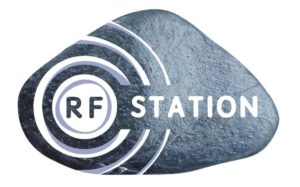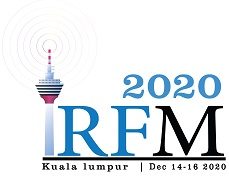RFM2020 Keynotes
RFM2020 Keynotes
RFM2020 is proudly to present the following keynote speakers during welcoming ceremony.

Microwaving a Biological Cell Alive ‒
Broadband Label-free Noninvasive Electrical Characterization of a Live Cell
James C. M. Hwang
Cornell University, Ithaca, New York 14853 USA
Abstract: Microwave is not just for cooking, smart cars, or mobile phones. We can take advantage of the wide electromagnetic spectrum to do wonderful things that are more vital to our lives. For example, microwave ablation of cancer tumor is already in wide use, and microwave remote monitoring of vital signs is becoming more important as the population ages. This talk will focus on a biomedical use of microwave at the single-cell level. At low power, microwave can readily penetrate a cell membrane to interrogate what is inside a cell, without cooking it or otherwise hurting it. It is currently the fastest, most compact, and least costly way to tell whether a cell is alive or dead. On the other hand, at higher power but lower frequency, the electromagnetic signal can interact strongly with the cell membrane to drill temporary holes of nanometer size. The nanopores allow drugs to diffuse into the cell and, based on the reaction of the cell, individualized medicine can be developed and drug development can be sped up in general. Conversely, the nanopores allow strands of DNA molecules to be pulled out of the cell without killing it, which can speed up genetic engineering. Lastly, by changing both the power and frequency of the signal, we can have either positive or negative dielectrophoresis effects, which we have used to coerce a live cell to the examination table of Dr. Microwave, then usher it out after examination. These interesting uses of microwave and the resulted fundamental knowledge about biological cells will be explored in the talk.
James Hwang is Professor in the Department of Materials Science and Engineering at Cornell University. He graduated from the same department with a Ph.D. degree. After years of industrial experience at IBM, Bell Labs, GE, and GAIN, he spent most of his academic career at Lehigh University. He cofounded GAIN and QED; the latter became the public company IQE. He was a Program Officer at the U.S. Air Force Office of Scientific Research for GHz-THz Electronics. He has been a visiting professor at Cornell University in the US, Marche Polytechnic University in Italy, Nanyang Technological University in Singapore, National Chiao Tung University in Taiwan, Shanghai Jiao Tong University, East China Normal University, and University of Science and Technology in China. He is an IEEE Life Fellow and a Distinguished Microwave Lecturer. He is also a Track Editor for the IEEE Transactions on Microwave Theory and Techniques. He has published approximately 400 refereed technical papers and been granted eight U.S. patents. He has researched the design, modeling and characterization of optical, electronic, and micro-electromechanical devices and circuits. His current research interest includes electromagnetic sensors for individual biological cells, scanning microwave microscopy, and two-dimensional atomic-layered materials and devices.
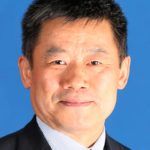
Decoupling Between MIMO Antennas by Compensation Network Method
Qing-Xin Chu
South China University of Technology
Guangzhou, Guangdong, P.R. China
Abstract: This talk will introduce a novel decoupling method, namely compensation network decoupling method, which can be used as a guiding idea to solve mutual coupling between antennas. The original network composed of two antenna elements is analyzed by introducing two auxiliary ports at the appropriate location of the antenna elements. From a rigorous theoretical analysis, in order to obtain mutual coupling impedance of the total network Z21 is zero, mutual coupling impedance of the compensation network Z43 must be zero. According to the impedance characteristic of original coupling network, compensation network with opposite impedance characteristic is introduced to compensate for the original coupling network, and realizes Z21 is zero, so as to achieve the aim of decoupling. An ultra-wideband inverted F antenna is proposed. The impedance bandwidth with |S11|<-6dB is 3.3-6.0GHz. Based on the antenna element, the application of compensation network decoupling method is analyzed with the neutralization line as the concrete example of compensation network. The introduction of two auxiliary ports shows that impedance characteristic of the original coupling network is inductive in low frequency band and capacitive in high frequency band. So firstly, an inductive neutralization line is designed, which compensates the capacitive original coupling network in high frequency band and improves the isolation of MIMO antenna in high frequency band. Next, a capacitive neutralization line is designed, which compensates the inductive original coupling network in low frequency band and achieves decoupling between antenna elements in low frequency band. Finally, a neutralization line with three lumped capacitors and a coupling neutralization line, which is equivalent to loading three distributed capacitors, are proposed to compensate the inductive original coupling network in low frequency band and capacitive original coupling network in high frequency band, so as to improve the isolation of MIMO antenna over the ultra-wide band. Simulated and measured results verify the accuracy of the design for multiple MIMO antennas. The measured isolation of the MIMO antenna with coupling neutralization line is better than 12dB over the operating frequency band, 3.34-6.23GHz.
Qing-Xin Chu is the professor with the School of Electronic and Information Engineering, South China University of Technology, the vice-chair of China Electronic Institute (CEI) Antenna Society, the vice-chair of CEI Propagation Society, IEEE Fellow and CEI Fellow. He currently is an Associate Editor of the Radio Science and IET Electronic Letters. He has published one book and more than 600 papers in journals and conferences with over 4000 SCI citations. He has been elected as the highly cited scholar by Elsevier in the field of Electrical and Electronic Engineering since 2013. He has authorized more than 70 invention patents of China. He was the recipient of the Science Awards by CEI in 2018 and 2016, the Science Award by Guangdong Province of China in 2013, the Science Awards by the Education Ministry of China in 2008 and 2002. His current research interests include antennas and microwave devices in wireless communication.
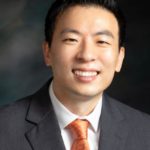
Challenges and Opportunities for Millimeter-wave
and sub-THz mobile antennas for Beyond 5G and 6G
Wonbin Hong
Pohang University of Science and Technology
Pohang, South Korea
Abstract: Expanding the technological footprint of millimeter wave and sub-THz antennas and propagation for Beyond 5G/6G cellular, access and infrastructures is expected to introduce unprecedented challenges. Practical design considerations and potential novel solutions related to the realization of millimeter-wave and sub-THz antennas with beamforming capabilities are discussed in detail. This talk attempts to assess the future direction of mobile antennas and RF circuits for high mobility devices such as future smartphones and data terminals using a holistic approach Afterwards, a series of detailed demonstrations will be discussed.
Wonbin Hong received his B.S. in electrical engineering from Purdue University, West Lafayette in 2004 and Masters and Ph.D. also in electrical engineering from the University of Michigan, Ann Arbor in 2005 and 2009 respectively. From 2009 to 2016, he was with Samsung Electronics as a principal and senior engineer participating and leading extensive R&D tasks for upcoming wireless applications including MIMO, wireless power transfer and millimeter-wave wireless solutions. As of 2016 February, Dr. Hong is with the Department of Electrical Engineering at POSTECH (Pohang University of Science and Technology) as an associate professor. He currently holds the Mueunjae Chaired Professorship.
He has served as an invited lecturer and speaker in over 90 international research symposiums, government and industry sessions held around the world. He is currently serving as the Associate Editor of the IEEE Transaction on Antennas and Propagation, IEEE Antennas and Propagation Magazine and Lead Guest Editor for the IEEE Antennas and Wireless Propagation Letter Special Cluster on “Antenna-in-Package, Antenna-on-Chip, Antenna-IC Interface: Joint Design and Co-integration”. From 2016 to 2017, he served as the Guest Editor of the IEEE Transaction on Antennas and Propagation Special Edition on “Antennas and Propagation Aspects of 5G Communications”.
ORGANIZED BY
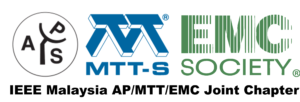
SPONSORED BY
